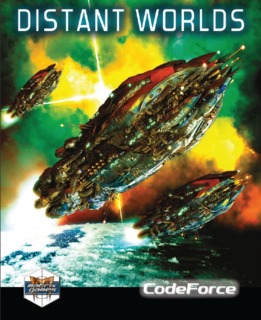A space aquarium, or a deep and complex 4X space title? You decide.
By far the most striking thing about this game is that there is an AI setting, 'Reign In Absence' in which the game will play itself. It will build ships, colonize new worlds, mine asteroids and gas giants, set taxes, do research, upgrade ships, conduct spy missions and diplomacy, and wage wars. Starting from this state, you can then turn off automation or have the computer suggest a course of action for all of the above. This allows you to just do the parts of managing a galactic empire that interest you. Just want to wage war? Set 'Fleets' to 'control manually'. Want to do that and design ships too? Turn off the design AI help. Not sure what ships to make? Have the computer suggest fleets for your final decision. These settings can be changed at any time, so if your empire gets too big, you can let the computer handle the details you managed in the early game.
This theme of automation is everywhere. For example, the game is divided up into the State and Private sectors. The State is everything you do. The Private sector, however, is completely automatic. As your empire expands, your citizens will demand luxury goods, and some computer entrepreneur will build a cargo ship (at your spaceport) and start hauling goods according to the laws of supply and demand, without any input from you. You might ask, why would you bother putting that in the game if you can't control it. The answer is, you have the impression of a living, breathing universe. Secondly, those freighters are juicy targets in times of war, because the damage done (goods not getting to destination) has real repercussions for the other empire. He might be waiting on that shipment of steel to build a destroyer. It's sort of like Grand Theft Auto's living world, except it's not just happening where the player happens to be, but all over the galaxy.
Finally, scope. Each star can have several planets, asteroids, gas giants, all of which need to be exploited and managed. A tiny galaxy has 100 stars like that, a huge 1400. The mouse wheel zoom is from a single ship, out to a good portion of the entire galaxy, where you can see your warships on patrol, your fleets on the move, and all those little freighters and passenger ships doing their automatic thing.
It must be said that at the time of this writing (2 weeks after launch) the game has several issues and UI bugs. Also, there are some balance issues. However, there has already been one patch and a second is imminent, and everyone at Matrix appears to listen to honest criticism from the boards and seem intent on improving the game.
Thumbs up.

